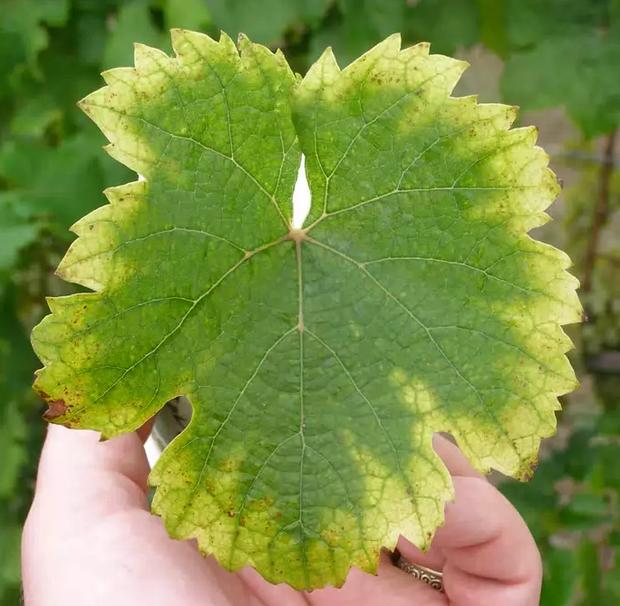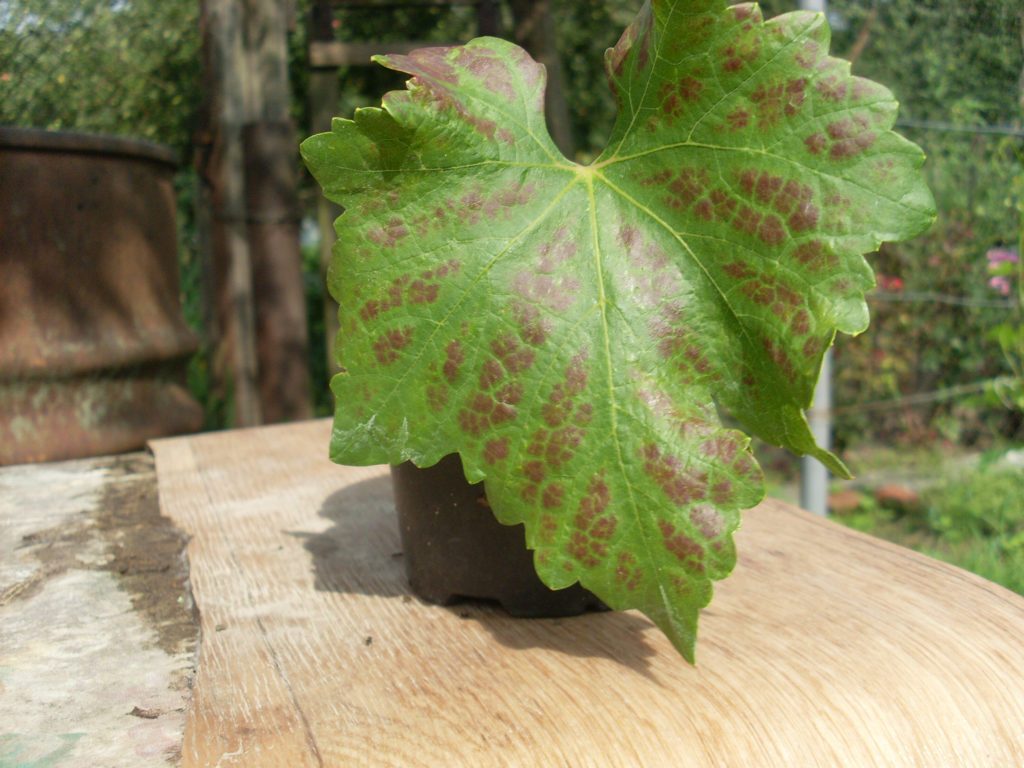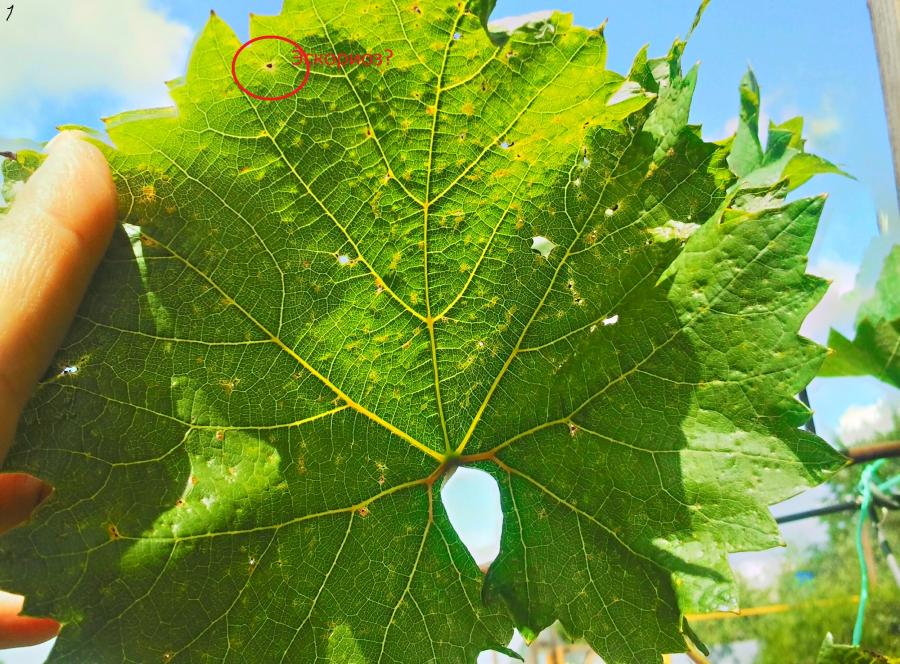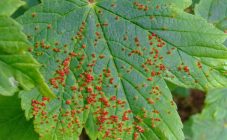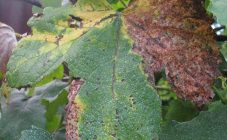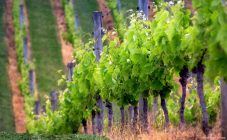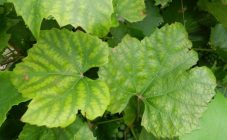Content:
Recently, viticulture has begun to develop not only in the southern regions. But without years of experience in growing grapes, it is difficult to determine if a plant is healthy. To do this, you need to look closely at the grape leaves.
What are the changes in leaf color
There are many reasons for the change in leaf color. The spots that appear on the leaves of the grapes will help determine the cause of the change. There are three main groups of reasons:
- Improper care;
- Diseases
- Pests.
The most obvious reason for a change in leaf color is improper care. This includes improper watering, lack or excess of mineral fertilizers, and improper lighting.
Not only the lack of nutrients can be recognized by the leaves. Knowing how grape diseases manifest themselves, you can help the vine in time and save the harvest. Diseases manifest themselves in different ways. This may be the appearance of round yellow oily spots on the top of the leaf. And there may be brown, brownish spots with a dark rim.
Vine leaves may turn yellow or red when infested by insects. When a tick is struck from below, a barely noticeable cobweb appears. The leaf blades may curl or become bumpy.
There are many reasons for changing vine leaves. To get a good harvest, the grower needs to understand the signals the bush gives and use the right chemicals when needed.
Improper care
For grapes, both lack of moisture and minerals and their excess are equally harmful. So, pale leaves can indicate a lack of sunlight or too frequent watering. If the vine is waterlogged, the leaves grow dull and lose their elasticity over time. Brown spots may appear on grape leaves. It starts to rot. Watering should be stopped; in rainy weather, measures should be taken to drain excess water from the bush.
Insufficient watering is determined by stopping growth, lethargy of leaves and shoots. The green parts of the vine turn light green.
Determine the lack of lighting by the following signs: not only leaves turn pale, but also shoots; the size of the plates decreases; shoots become longer than usual.
Loss of green color in leaves is also possible due to frost. If frost occurs after the formation of the leaves, the leaves can either be discolored completely, or become covered with colorless spots. This is rare.
By the type of leaf blade, you can find out about the lack of minerals.
- Loss of color can also indicate a lack of nitrogen. But in this case, after a while they turn yellow. If you do not take action, the leaf cover will turn brown. The leaf blades begin to change first at the root. Gradually, from bottom to top, the entire bush will become pale, and then brown.
- With a lack of potassium, the leaf edge first turns pale, a yellow outline is formed. Very quickly, this pallor passes over the entire plate, it becomes brown, rusty, bypassing the stage of yellowness. The leaves at the bottom of the bush are damaged first. Exactly the same symptoms are noticeable with a lack of iron.But in this case, the leaves at the top of the bush begin to change color. They seem to start to rust.
- The lack of manganese is indicated by the paleness and then yellowing of the leaf blade with the preservation of the green color of the veins. The edge of the leaf turns red, gradually becoming red. Black spots often appear on the leaf plate.
- Red spots indicate a lack of phosphorus. The leaves are small and brittle. The whole bush develops slowly.
Diseases
The most common and dangerous grape disease is downy mildew or mildew. It can be identified by light yellowish-oily spots up to 6 centimeters in diameter. On the back of the leaf in these places, the mycelium develops - a white fluffy bloom. Over time, brown spots grow on the leaves of the grapes, acquire a coating of rust and fall off. This disease is dangerous not only with the probability of completely losing the crop, but also with a decrease in the cold resistance of the bush.
Another vineyard disease of fungal origin is oidium. Another name for this disease is powdery mildew. This fungus affects not only the leaf, but also other parts of the plant. In spring, young shoots infected with powdery mildew seem to be covered in flour. Affected shoots are stunted and clumsy. Closer to summer, all green leaves are covered with a mealy bloom. The set grapes burst and are turned out by the seeds. This is the main symptom of this disease.
Black spot is a fungal disease that most often affects vineyards in areas with high humidity. A characteristic feature is that black spots appear on the leaves and branches. The sheet plate dries and deforms. It affects all parts of the plant.
Why do grape leaves turn red in spring? The plant in this case is infected with rubella of grape leaves. It develops on the green parts affected by insects. It begins to appear in late spring - early summer. Affected leaves turn red like autumn maple leaves. Even before flowering, such leaves fall off. But if there are red raised spots on the grapes, it means that the vine is infected with grape itch.
White rot develops on berries and shoots damaged by weather or insects. When the bush is affected by this rot in dry weather, light pink dots appear on the berries. These dots turn black when it rains. On strong, healthy berries, brown spots appear with a border around the edge.
Pests
About 800 species of insects can harm vines. Without prevention and timely treatment, you can lose up to half of the harvest.
- Grape mites are the most common pest. Bumps on the leaves speak of his presence. The lower part of the cavity is covered with thin cobwebs. The defeat of the plant by a tick can lead in the future to fungal diseases, which will complicate the treatment of the vine.
- Phyloxera, or grape aphid. A very dangerous pest that damages grapes in any form. Aphids are quarantine pests and can destroy all plantings of vines. When leaves are damaged, galls are formed on them, in which aphid eggs are located. More often, such neoplasms appear in the second year of infection. It is difficult to detect, since aphids most often settle in the roots of grapes. Aphid larvae inflict more damage. They stick to the roots and draw out the juice. In places of damage, bumps and swellings are formed.
- When affected by thrips, the leaves turn brown, deform and curl. Thrips suck the sap from the leaves, which weakens the entire plant.
- Beetles - weevils feed on buds and young leaves of grapes, causing irreparable harm. And the larvae living in the soil are able to destroy the root system of the plant.
- Leaf rollers.Grape bushes are attacked by three types of leaf rollers: grape, biennial, bunch. Having a different appearance, they equally cause great harm to plants. The caterpillars of leaf rollers eat buds, flowers, leaves, shoots and years. Without human intervention, only the skeleton remains from the grapes.
These are the most common causes of leaf changes. Proper and timely processing of the vineyard will help protect the bushes and the future harvest not only from them, but also from many other diseases and insects - pests.
Treatments and methods of controlling insects
The basis for a healthy vineyard is the cleanliness of the land around it. In autumn, fallen leaves are necessarily collected and burned. In spring and summer, all weeds should be removed, both near the bush and under it. During the growing season, you should monitor the density of the bush - remove excess shoots and leaves in time. Such a simple work will reduce the risk of contracting fungal diseases at times.
During the growing season, it is enough to water the grape bush 2-3 times.
- The first time is watered before the buds open to charge the soil with water. Approximately late March - early April.
- Second time during the formation and pouring of the year.
- The third time is late October, early November. Wet ground will prevent roots from freezing.
But if the summer is hot, you can water it more often. Each bush for one watering will require 50 - 70 liters of warm water.
The next step in prevention is fertilization. But everything is not so simple here. In each phase of development, grapes need different nutrients. It is possible to fertilize grapes with one-component formulations (ammonium nitrate, superphosphate) and complex (Kemira, Solution, Aquarin).
For better assimilation of mineral additives, manure is applied under the bushes. It will not only improve the air permeability of the soil, but also enrich it with useful organic substances. Also, manure will help in the development of microorganisms necessary for the assimilation of microelements by the vine.
Ash can be added under the grapes - a source of potassium and phosphorus. Unlike potassium chloride, it does not contain chlorine, which can harm the plant.
Terms and methods of feeding
It is better to feed the roots with grooves 40 cm deep. Such grooves should be located at a distance of 50 cm from the plant. When watering, minerals will be absorbed by the main roots of the vine at this very distance.
- In the spring, after the snow melts and before the bushes open, each plant should be watered with the following solution: dilute 20 grams in a bucket of water. superphosphate, 10 gr. ammonium nitrate, 5 gr. potassium salt.
- The grapes are watered with the same solution two weeks before flowering.
- When the grapes begin to ripen, superphosphate and potash fertilizers are added to the soil.
- After harvesting, potash fertilizers are applied. This will increase the frost resistance of the bushes.
Fertilizer weight (calculated for 1 bush)
| Application time / fertilization | Nitrogenous, gr. | Superphosphate, gr. | Potassium, gr. | Note |
|---|---|---|---|---|
| Before shelter for the winter | 40 | 40 | 30 | They are introduced into the grooves, covered with earth. |
| 1.5 weeks before flowering | 40 | 50 | 30 | Make a solution in 10 liters of water |
| After flowering | 20 | - | 10 | Diluted in 10 liters of water |
| During the ripening of the grapes | - | 20 | 20 | Diluted in 10 liters of water |
In addition to root feeding, foliar is also carried out. Grape leaves absorb substances dissolved in water well. Spraying is carried out three times per season: before the appearance of flowers, after flowering and when the fruit ripens. The solution is made from micro and macronutrients.
Foliar dressing will not only deliver nutrients directly to the plant, but will also significantly save fertilizer and water.
Top dressing on leaves is carried out in four stages.
- 3-5 days before flowering. Make a boric acid solution at the rate of 5 g. for 10 liters of water. You can add fungicides. One bush is sprayed with this composition.
- 5-10 days after flowering. Phosphorus fertilizers or ash are used.
- 15 days after the second spraying with the same composition.
- 15 days before harvest.
Top dressing carried out on time will help the grapes to lay many strong brushes.
How to treat diseases
It is important to correctly identify the disease that has affected the plant. For many diseases, the symptoms converge. However, the reason is most often the same - the fungus. Chemical preparations available for purchase in stores will help to remove any type of fungus. Even when the grower is against the use of chemicals, in the face of the threat of losing all plantations and experienced, they resort to using chemicals.
What drugs should be used in this or that case? The table will help to answer this question.
| Disease | Drugs |
|---|---|
| Mildew | Rodimol Gold, Strobi, Polychom, Arcerid, copper oxychloride, Bordeaux liquid |
| Oidium | Topaz, Strobi, Acrobat MC, Horus, Tiovit, colloidal sulfur, Karbis Top. Alternaria. Bordeaux liquid helps to cope well. |
| White rot. | The same fungicides are used as in the fight against mildew and powdery mildew. |
| Gray rot | Poorly treatable. Gardeners use Switch, Horus, Antracol |
| Black rot (escoriasis) | The same preparations are suitable as for fighting white rot, as well as Topaz, Antracol, Bayleton, Benzophosphate, Bordeaux liquid and copper-containing fungicides |
| Rubella grape leaves | Bordeaux liquid, Omite, Fundazol and fungicides against muldu. |
As can be seen from the table, the same drugs are used for many diseases. Thus, the treatment for one disease becomes the prevention and treatment of another.
Insect pest control
Often, grape diseases are provoked by an attack of insect pests. The article gave a brief overview of these insects and methods for their identification. The following drugs and measures will help get rid of them.
| Insect | Measures taken | Drugs |
|---|---|---|
| Phylloxera | 1. Remove superficial roots; 2. Destroy weeds. 3. Treat planting with insecticides twice a season. | Fastak, Aktellik, Kinmiks. |
| Grape mites | 1. Remove all affected shoots and weeds; 2. In the spring, treat the vines with a 5% solution of lime and sulfur; 3. If ticks are found, treat the leaves with acaricides and insecticides; 4. Burn removed diseased and all fallen leaves. | BI-58, Aktellik, Neoron, Omayt, Fozalona, Karate. |
| Leafletter | 1. At the end of May, spray with chemicals. 2. Constantly remove fallen leaves. 3. After flowering, spray the bushes with a weak (0.1%) solution of Rovikurt. | Confidor, Arrivo, Inta-vir, Fastak, Fufanon, Rovikurt. |
| Thrips | The plant should be examined frequently and chemicals should be used at the first sign of thrips infestation. | BI-58, Karbofos, Arrivo, Karate, Decis. |
With the right approach, caring for grapes will not take long. As a rule, the fertilization of the vines and the treatment against diseases and pests are carried out at the same time. All these activities can be combined.
